F1’s top three teams fared very differently in the first test of the year while the midfield saw signs of big changes. Here’s what we learned about each team last week.
Mercedes
[f1tv2020testb]The world champions supplied by far the biggest story of testing so far when footage from their car on Thursday revealed its pioneering Dual Axis Steering system.
Its exact purpose is unclear, but it seems to allow the drivers to adjust the toe angle of their front wheels as needed. Copying it is unlikely to be easy, and while their rivals played down suggestions it might provide a significant advantage, they will all be desperately hoping it doesn’t.
Aside from the eye-catching DAS, the rear suspension on the W11 is also a departure from its predecessor. Valtteri Bottas indicated the changes have produced a car he is happier with.
“The main improvement I feel is the stability we’ve had with the car, especially the rear end of the car feels really stable and makes it very drive-able,” he said.
“We’re still discovering different things with set-ups, if we can find something more than last year. I would say that the balance between the speed range from high to low speed is more together than that last year, so that’s a good thing.”
Bottas added he felt “no real negatives compared to last year yet”, which appeared to be borne out on the time sheets – as inconclusive as they can be – where Mercedes were an ominous 1.3 seconds faster than anyone. The only consolation for their rivals is they used the softest tyres available to do it.
Ferrari
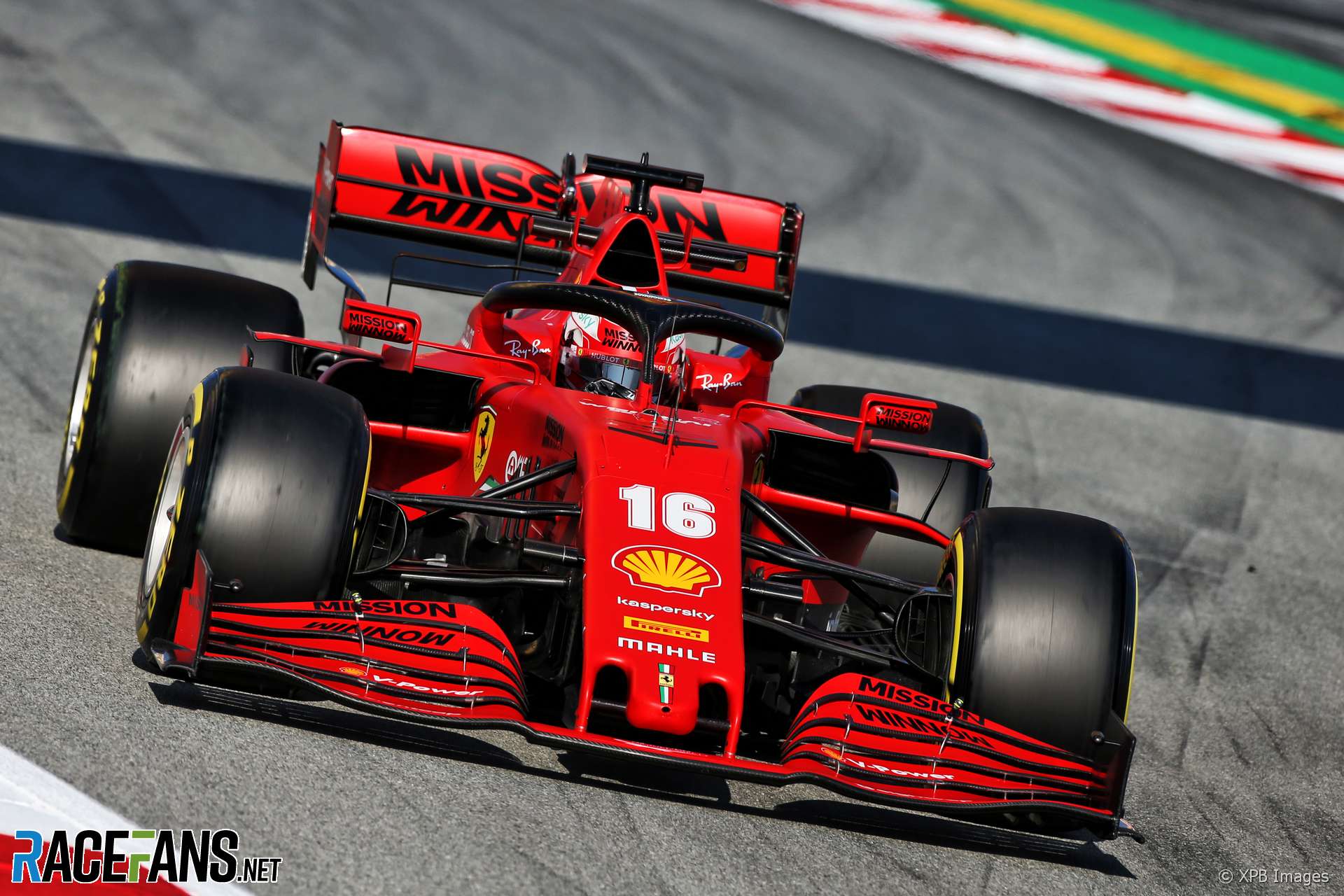
Nonetheless the first three days of testing were a far cry from last year, when Sebastian Vettel dubbed his car “close to perfect” after the first day. This year he missed the opening day due to illness, and when he did get a full day in the car it was interrupted by a power unit failure.
The unit has gone back to Maranello, but as team principal Mattia Binotto admitted the timing of its failure gave cause for concern: “Very early mileage if you consider the overall mileage so far.” Ferrari had put around 1,300 kilometres on an engine which has been designed to do up to eight race weekends, which is 2,440km in race distances alone, plus qualifying and practice.
“What is the detail [of] the issue is something we will understand when the engine is back in Maranello,” he said, “so we will see in the next days.”
Ferrari’s main objective with its new car was to generate more downforce and widen their range of set-up options. Binotto saw some progress in that regard.
“If we compare our performance compared to last year, same time here in Barcelona, the best thing we are certainly a lot faster in cornering, [but] slower in the straights,” he said. “I think that in that respect the data somehow matching with our expectations. So, yes, we’ve got more downforce. Will that be sufficient? Let’s wait and see.”
Less optimistically, Binotto also admitted their analysis of the early testing times indicates Mercedes and Red Bull are faster.
Red Bull
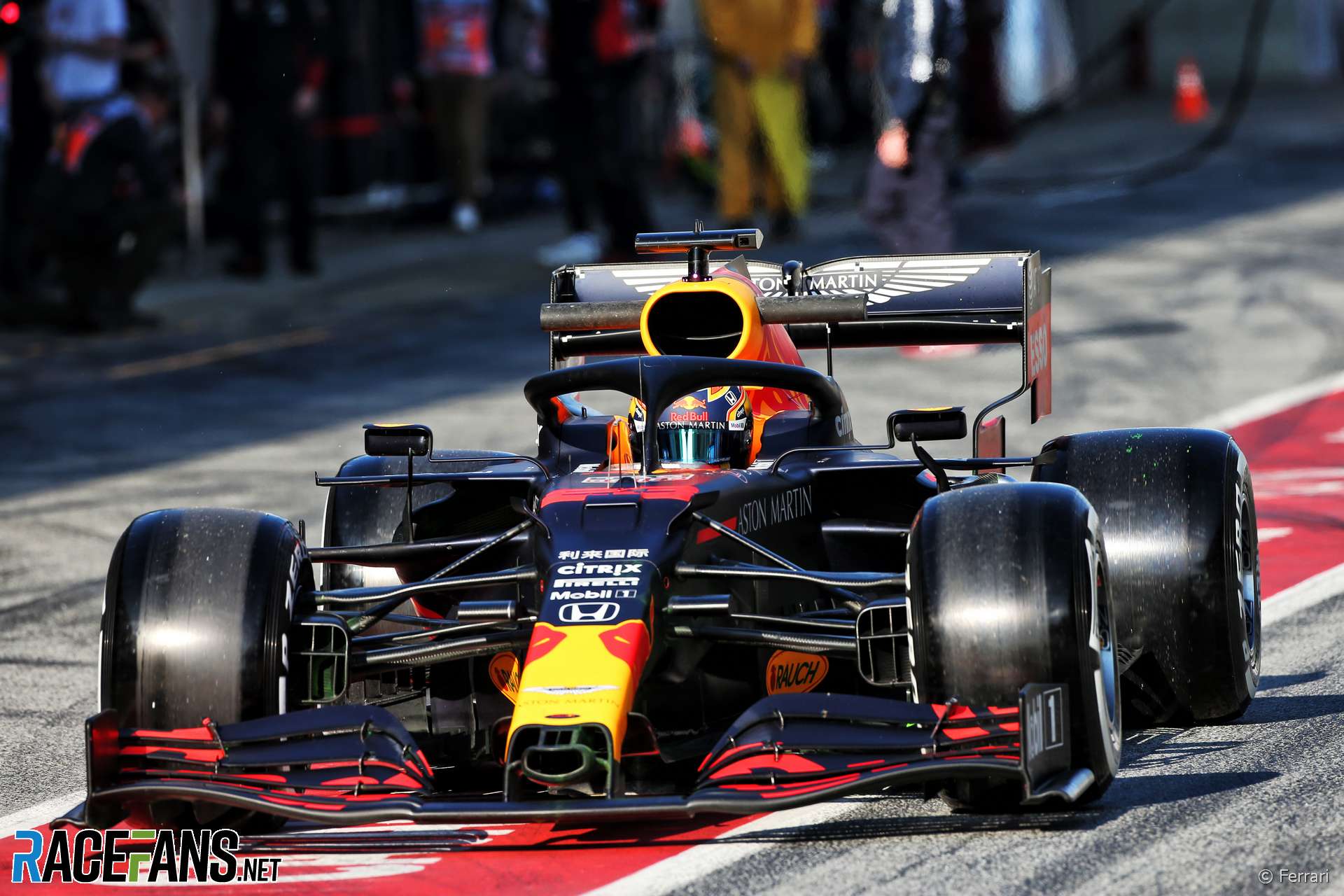
[smr2020test]Honda had to change one of its power units even earlier than Ferrari – Red Bull’s engine was swapped on day two, though they later put it back in the car. Nonetheless the team covered plenty of laps – they were the only team besides Mercedes to cover 2,000 kilometres over the three days. This was also despite Max Verstappen damaging his car on a kerb on Friday.
“Everybody within the team we knew that to be successful, you need to fully understand the car, you need to do a lot of laps,” said Verstappen. “So far we are very pleased with what we have done.
“Especially my first day, 168 laps, basically just ticked the whole program. And [Friday] again, of course I only had the morning but again a good amount of laps, I’m very happy with it. Everything is running very smoothly and that’s exactly what we what we want.”
Red Bull didn’t grab the headlines as Mercedes did with either fast laps or eye-catching innovations, but Verstappen believes the team have made the gains they sought with the RB16.
“Overall it feels a bit more connected. But that was also the target, so there was no real surprise there.
“I think already towards the end of the season we were working towards that and already last year testing some ideas for this year. It was what we targeted already from the winter onwards. Once I jumped in the car, it was like that.”
Advert | Become a RaceFans supporter and
McLaren
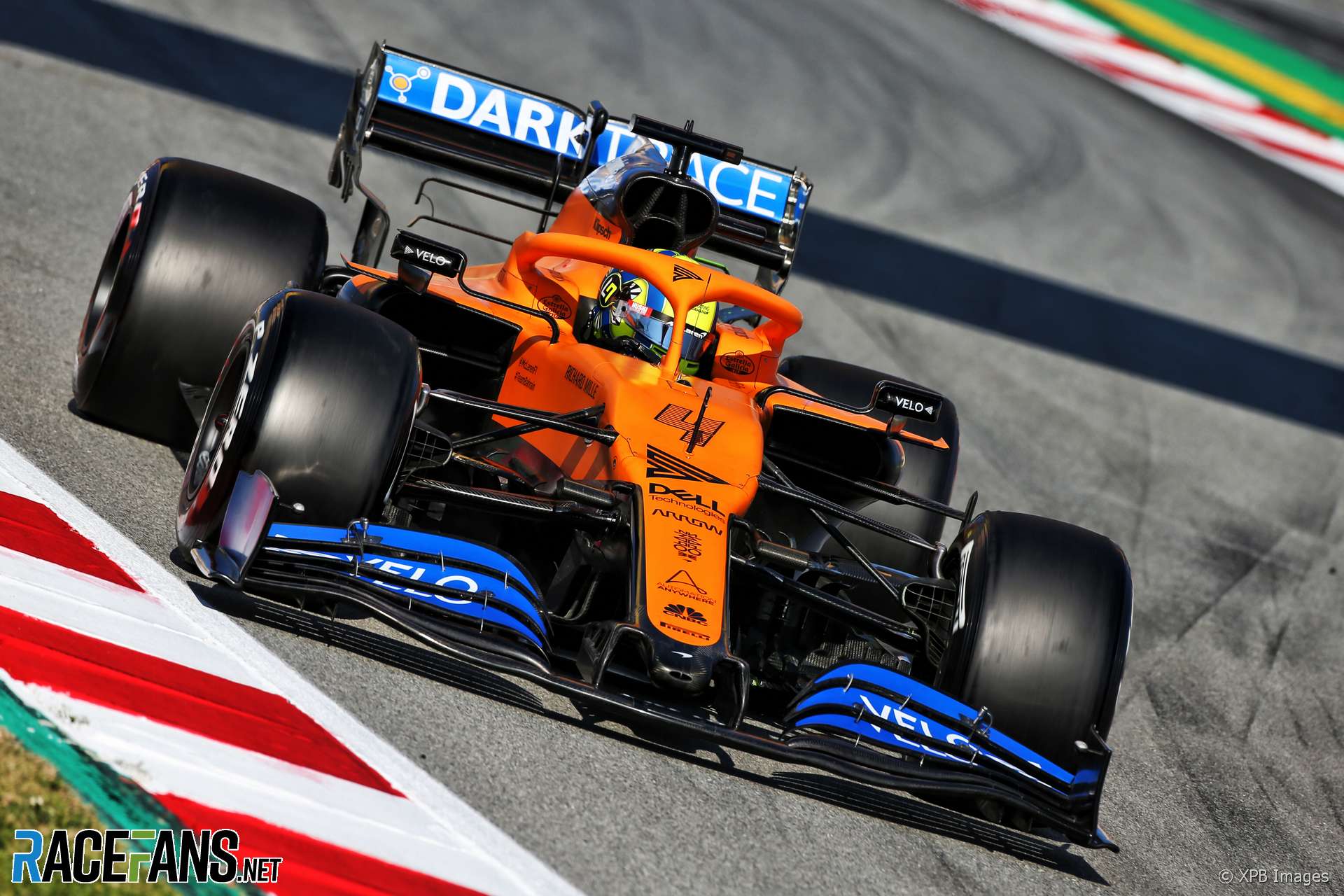
Not unlike Red Bull, McLaren racked up a significant mileage in an undemonstrative fashion. Andreas Seidl was very upbeat about the team’s progress at midday on Friday, calling it their best start to testing for years.
McLaren’s development programme was a clear strength last year and that appears to have continued with the evolutionary MCL35. Upgrades have already arrived for the car, such as a new front wing which was fitted on Friday morning.
“We have a programme lined up with continuously bringing parts to the track also next week in order to get as much performance out of the car as possible before we head into Melbourne,” said Seidl. “In terms of the performance so far it’s still early days.”
Renault
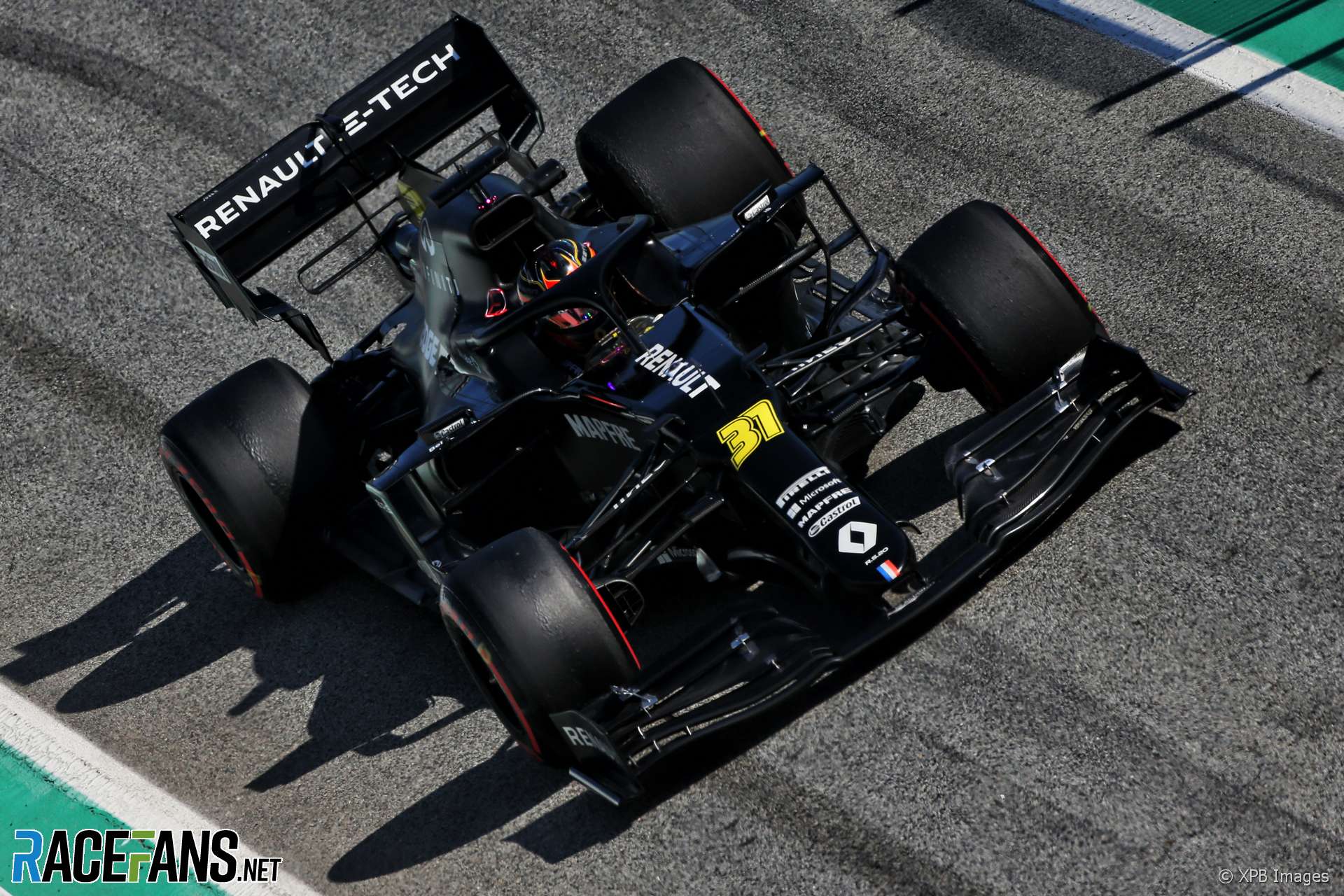
[f1tv2020testa]Before testing Renault said their plan for 2020 was to introduce a car which made a significant step forward in performance over its predecessor and put them in a strong position early in the season, allowing them to switch their focus to next year’s new technical regulations early.
You only have to compare the slim nose of the RS20 to last year’s car to see the truth in that. But there’s little sign yet the team have found the performance they were looking for. Esteban Ocon admitted they have a lot to do in the second week of the test.
“I think we have plenty of stuff for the team to work on,” he said. “Of course we have to work on how the car feels balance-wise. We are still not where we want to be exactly.
“But there’s nothing we can’t fix so that is good. What I would like to have is to arrive at the last day of the test and say OK, we’ve fixed the balance and it feels decent to arrive into Melbourne.”
He was encouraged by the fact he and team mate Daniel Ricciardo – one of only two new pairings on the grid this year – are giving comparable feedback about the car.
“It is definitely a step forward. I think [Friday] morning was very good in terms of feeling where we have to improve the car because yesterday evening it was more aero work and nothing really driving properly. So we could more focus on feeling the limitations of the car today and we have a clear picture.
“We are also pushing on the same direction with Daniel, which is always good because we both have the same comments. So far it’s a good start and I look forward to see what we can do next week.”
Renault also lagged behind their rivals’ mileage tallies after two days, but a busy Friday helped them make up for some of the lost time.
Advert | Become a RaceFans supporter and
AlphaTauri
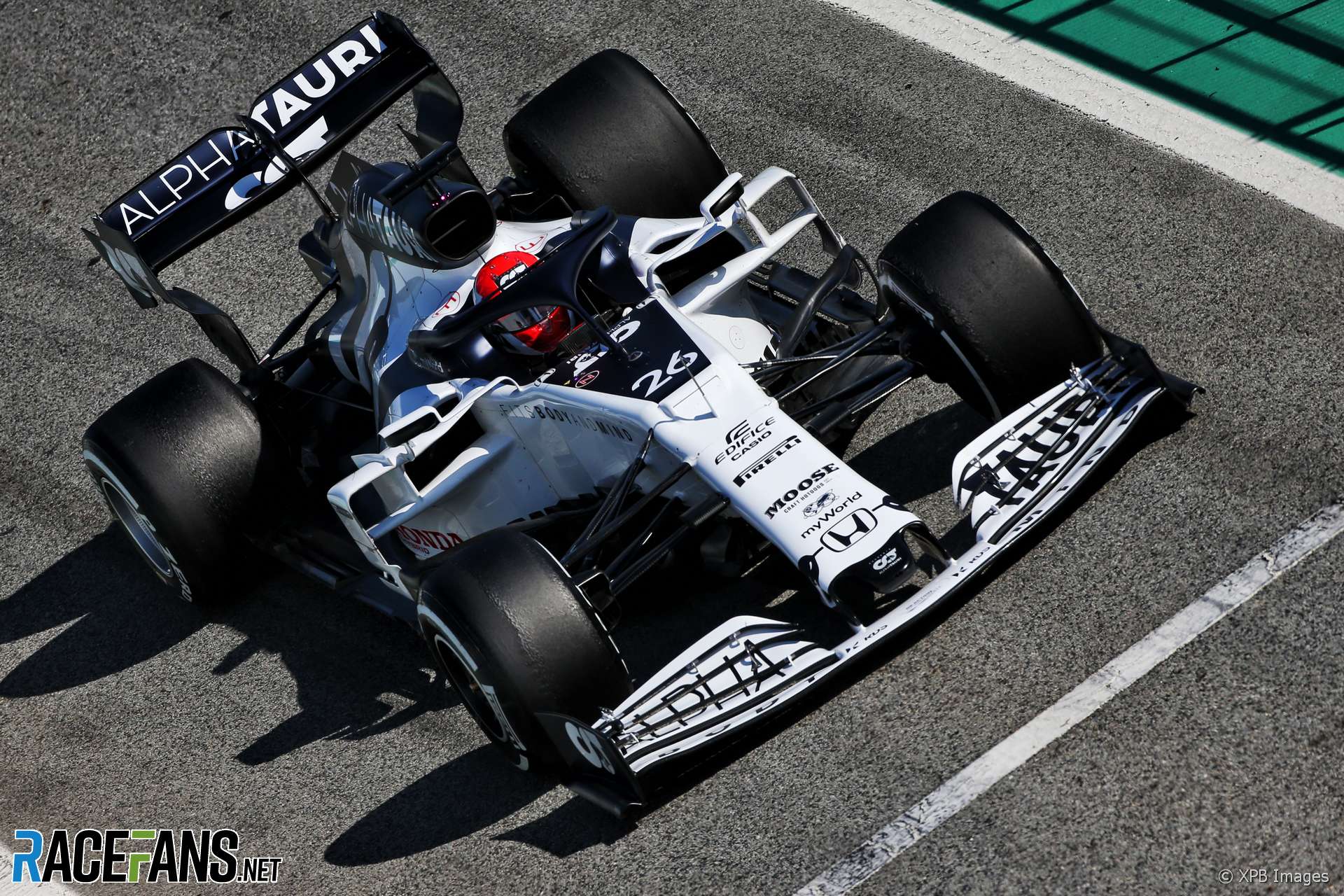
The car may look outwardly different but in reality the AlphaTauri AT01 is a Toro Rosso STR15 and life goes on as usual for Red Bull’s ‘other’ team.
AlphaTauri appeared to get through their three days without changing their power unit, which is more encouraging for Honda. They amassed 1,700 kilometres over three days, delayed slightly by floor damage on Friday.
This is the second year since the team realigned with sister outfit Red Bull’s choice of engine supplier. This means they can make greater use of common parts supplied through Red Bull Technologies and make fewer compromised in the crucial area of packaging the Honda power unit.
The team didn’t give much away about its progress, team principal Franz Tost indicating they are “going in the right direction”.
Racing Point
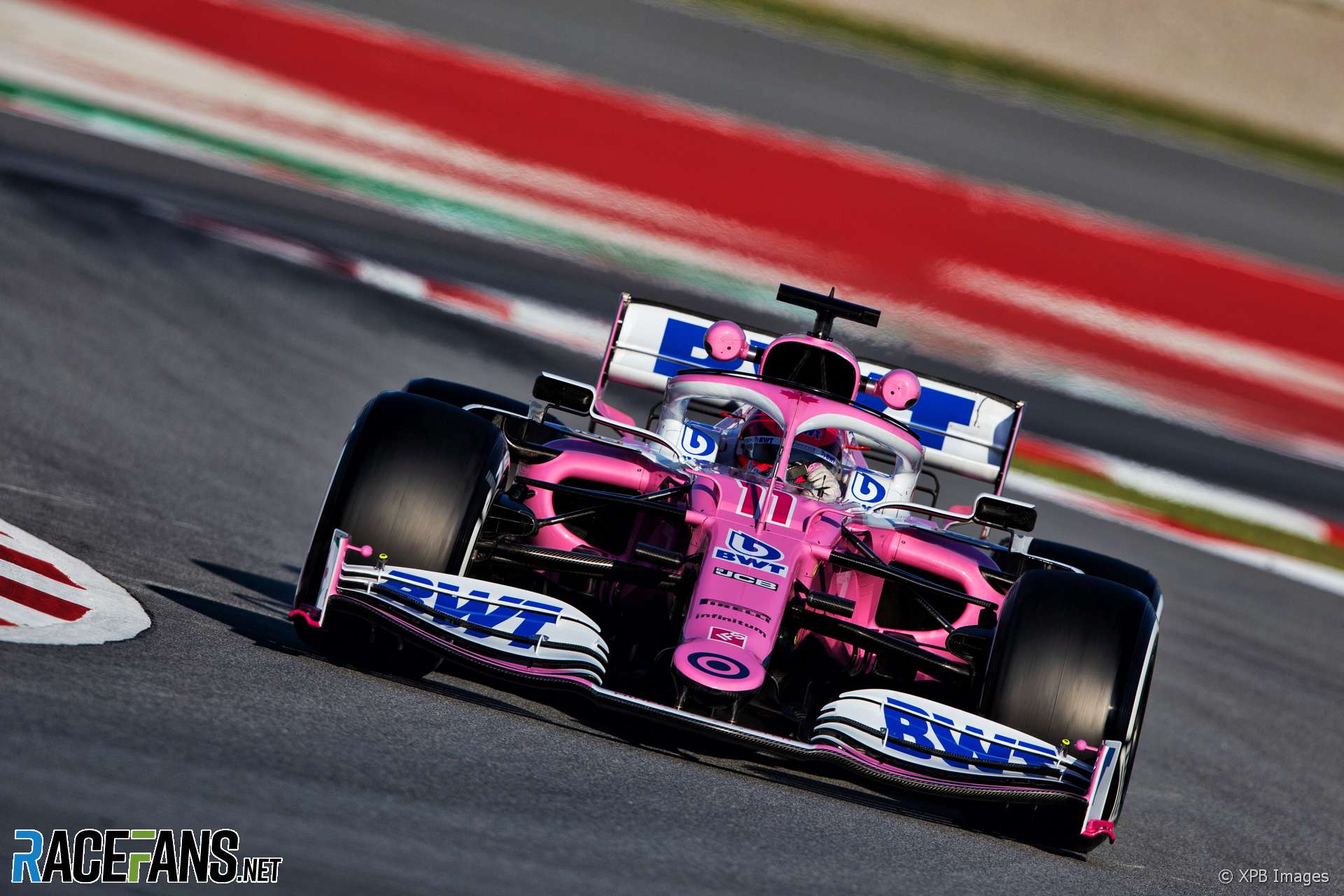
Back in those ancient days, long ago, before anyone had even heard of DAS, Racing Point’s ‘pink Mercedes’ was the first big story of pre-season testing. It marks a major design departure for the team and something of a gamble, for duplicating a rival team’s aerodynamics is a complicated business, especially given the sophistication of the exterior surfaces of modern F1 cars.
However the RP20 appeared to hit the ground running. Rapid lap times came easily to the team. The early impression is their gamble has paid off.
“It’s still hard to know where we where we sit based on fuel load and car weight,” said team principal Otmar Szafnauer. “But the things that we tried to fix with this car, I think we fixed.
“We’ve been buying gearboxes and engines for Mercedes for quite some time, ever since we stopped buying from McLaren. And we had a tricky situation with Mercedes because we ran a high-rake concept that was really developed by Red Bull from the days of the blown diffuser – when they ran a high rake then too, we copied the blown diffuser way back in the day and that required a high rake.
“But Mercedes’ gearbox didn’t lend itself to what we were trying to do. And forever we grappled with [being] limited at the rear with the aerodynamic development because of the gearbox we were using. This is the first year where we could actually take time and do what we always needed to do at the rear. And I think we fixed some of those problems.”
Go ad-free for just £1 per month
>> Find out more and sign up
Alfa Romeo
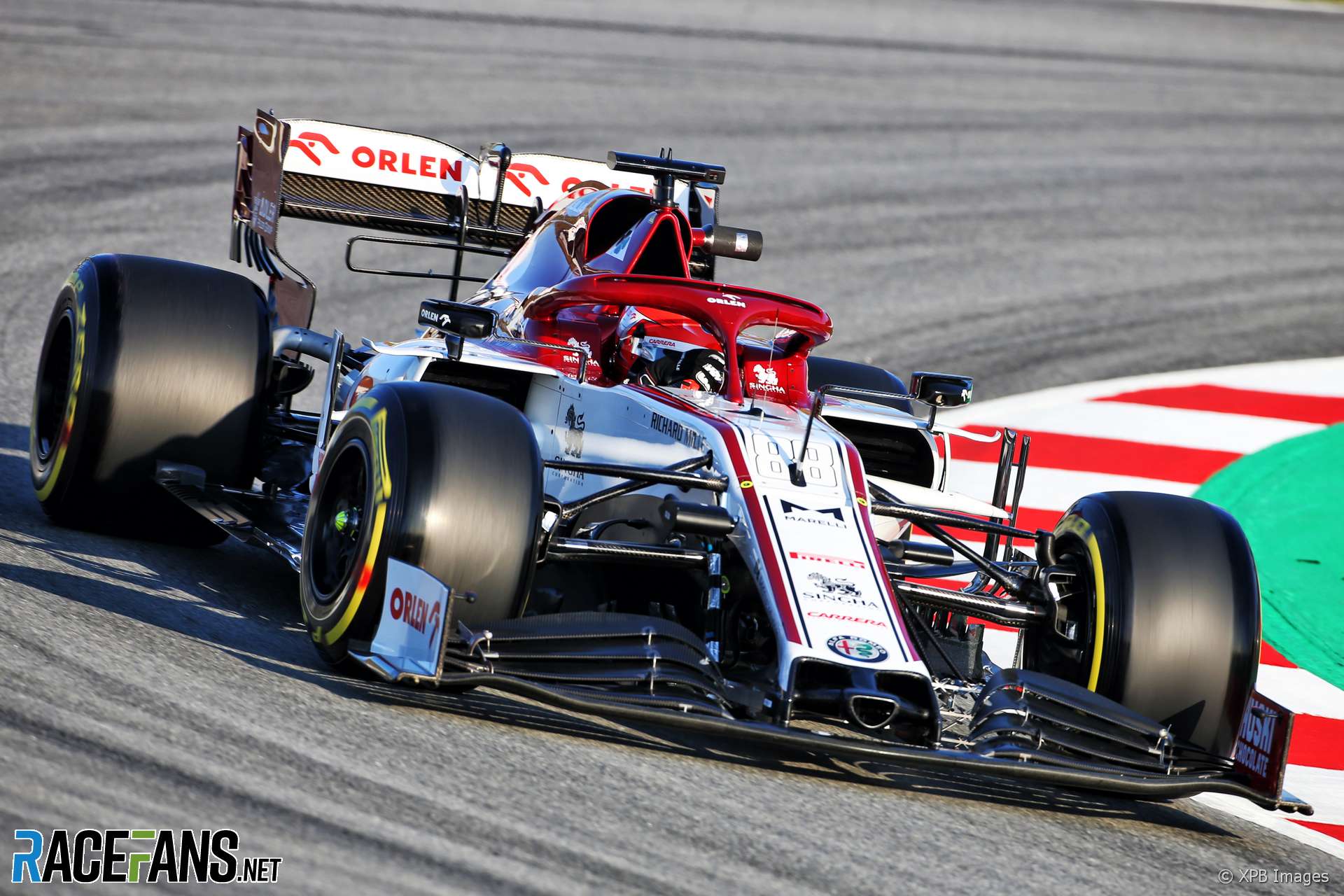
The only team to deploy a test driver in the reduced, six-day pre-season test: Robert Kubica put the first laps on the C39 on Wednesday morning before handing over to the race drivers.
The team ended last year in a peculiar situation, the performance of its previous car fluctuating dramatically from track to track. Its C39 posted some decent lap times this week, though often on the softer tyres, making it hard to get much of a read on their position.
“We ran without issues for three days, completing all the tests we had on our list and putting the third highest mileage of all teams under our belts,” said the team’s new technical director Jan Monchaux. “The first week was all about reliability and making sure all systems worked, while next week we will focus more on our car’s performance.”
Haas

While the first three days of testing were striking for how few red flags there were, it was notable that the two stoppages caused by driver error both occured when a Haas driver went off. Perhaps the VF-20 is a tricky machine.
Last year the team looked great in testing, but their season went wrong about two races in. They are therefore wary of drawing any firm conclusions based on the pre-season running.
The team had a few niggling problems on Friday. A leaking water pipe cost them half an hour, then a wheel rim failure caused a flat tyre, then Kevin Magnussen binned the car on his fifth lap after the lunch break. All of which has left the team at the bottom of the mileage table.
However team principal Guenther Steiner was satisfied they had run well enough up to that point that the lost afternoon was not too great a waste.
“Obviously to fix the car took too long for the few laps you can do at the end so we decided to call it a day and pack in. But we could do that because the rest of the week was going well, the first two days were very good.”
Williams
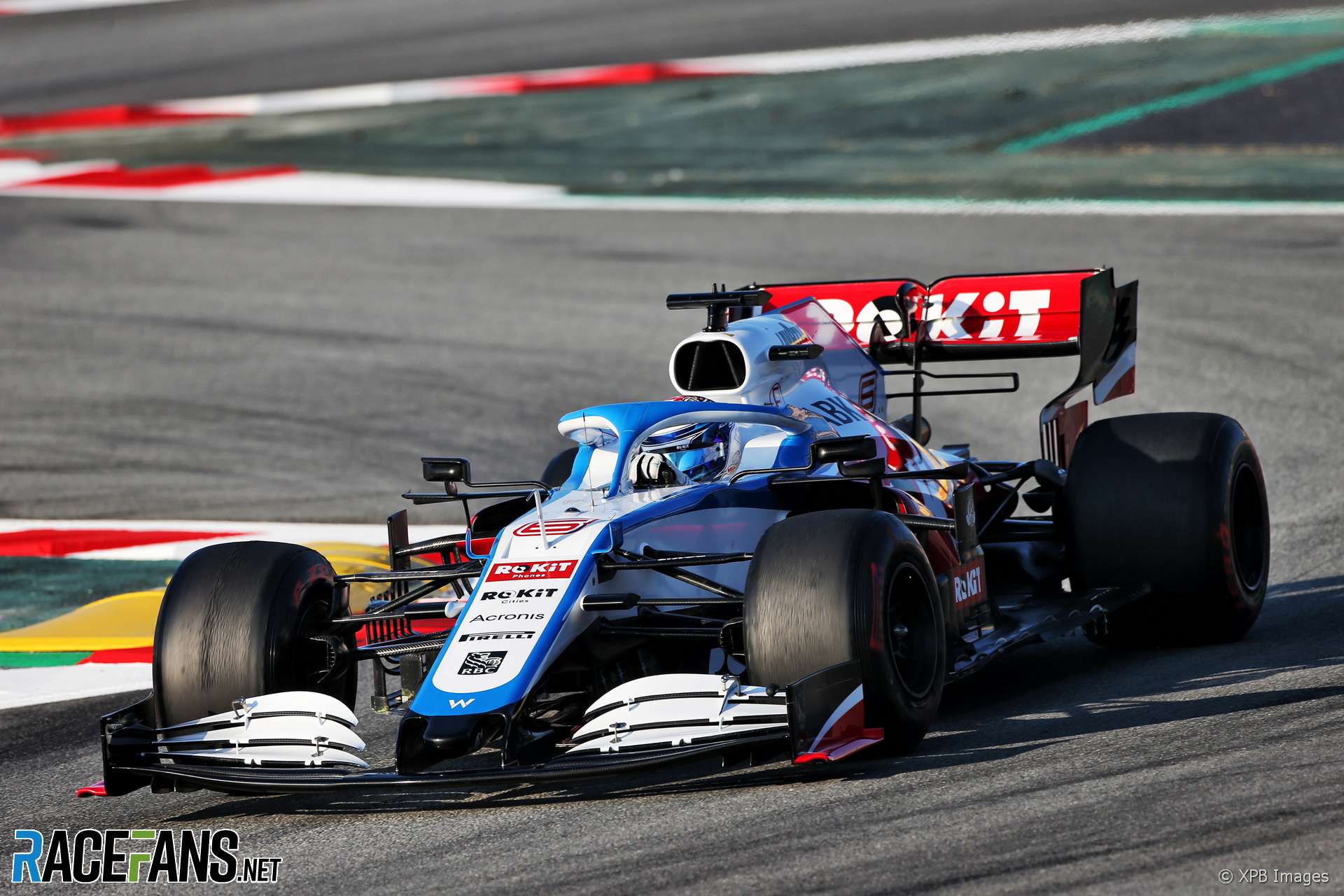
The sense of relief was palpable when Williams sent their FW43 out first at the start of testing, 12 months on from their humiliating experience of having to sit in the garage throughout the first two days, waiting for their unfinished chassis to appear.
It’s easy to underestimate the scale of the challenge Williams face this year. In 2019 the gap between midfield leaders McLaren and the top teams was half of Williams’ deficit to the second-slowest car. Getting the FW43 running from the off is just the first box ticked – albeit an important one. What matters now is just how much better it is than last year’s car.
“It is quite a lot better, I think,” said head of vehicle performance Dave Robson. “But obviously the whole sport we’re in is a race. So whilst we might be better than our car was just back in December, that probably doesn’t mean that much if everyone else has moved on a lot.
“So we got to wait as always and see what happens in qualifying and the first few races. But the drivers are happy. I think conditions here are very favourable, the track’s in very good condition, which probably makes the comparison a little bit harder. But the car is promising.”
One key change Robson revealed about their new car is they’ve made fewer compromises for cooling, which should translate into a straightforward gain in downforce of the kind that isn’t necessarily available to teams whose 2019 cars were more refined.
“We probably had too much cooling available throughout the last year,” said Robson. “And then there wasn’t an easy way of kind of closing it up and trading the cooling for the downforce. Which we’ve been able to do with a bit of a reset this year.
“So things are much more tightly-packaged this year. We think we’ve got enough cooling to see us through the season, or at least we know how we’ll design the bits to cope with what we’re likely to have. And we have been able to trade that for the performance.”
Quotes: Dieter Rencken
[f1tv2020testc]
2020 F1 season
- Pictures: Wrecked chassis from Grosjean’s Bahrain fireball crash to go on display
- Bottas vs Rosberg: Hamilton’s Mercedes team mates compared after 78 races each
- F1 revenues fell by $877 million in Covid-struck 2020 season
- Hamilton and Mercedes finally announce new deal for 2021 season
- F1 audience figures “strong” in 2020 despite dip in television viewers





grubschumi
22nd February 2020, 10:14
Well, it really looks at face value Mercedes have a large speed advantage over the field but that is no different since 2014. Yes it’s only testing but the body language of the car looks amazing. Even so much so that last year’s car in the guise of Racing Point looks really good on track and the body language looks ominous, its turn in to corners looks stunning . Such was the pace advantage the W10 had over the field last season, it looks like they the w10 would still be the class of the field in 2020.
slowmo (@slowmo)
22nd February 2020, 11:11
*race pace advantage. On raw pace Ferrari had more last year and even Red Bull had them beat on a handful of races for raw pace. That’s why single lap times mean very little and hence test times in isolation mean nothing. Haas looked easily 4th fastest last year until the issues with stint pace became apparent.
KGN11
23rd February 2020, 2:05
Only track Red Bull had Mercedes beat for pace was Brazil.
Ferrari had the advantage in qualifying, but in the race not at all.
Dom (@3dom)
22nd February 2020, 11:46
No chance. RB and Ferrari will be at least 0.5 seconds faster than they were at the end of last year. You stand still in F1 and you go backwards
Kurik
22nd February 2020, 12:47
Why every year we have the same thinking where we think these times mean anything at the moment? Its testing. Merc was on the fastest tire. We dont know what fuel loads or set up or engine modes. Can we all get a grip at least until next friday?
anon
22nd February 2020, 16:53
Headline times, certainly, are rather misleading, but the information that comes through from the longer runs, whilst not conclusive, can suggest some trends.
That, at least, does seem to be suggesting that we have an interesting situation in the midfield pack. McLaren’s somewhat barbed comments about Racing Point may be because Racing Point are now looking much more competitive – maybe even leading the midfield pack – but, based on long run data, AMuS reckoned that that you have Racing Point, McLaren, Renault and Alpha Tauri clustered together, then a slight gap back to Alfa Romeo, Haas and Williams together in another group, with Williams at least closing up to the back of the midfield pack.
What it does suggest is that, largely speaking, we might not be seeing huge changes in the pecking order in the midfield pack, save that Racing Point seem to be starting more strongly and Williams starting less far back from the pack. Upfront, it kind of looks similar to last year as well – Ferrari’s comments do sound rather dour too, and Binotto’s rather blunt comments suggest he’s pretty convinced that they’re 3rd fastest at best.
KGN11
23rd February 2020, 2:08
You say Mercedes was on the fastest tyre, ok. Let’s remove the times they set on the C5, Hamilton’s time on the C2 [hardest compound] was a 1:16.9, which would still leave them with the fastest time.
KevinC (@kevinc)
22nd February 2020, 13:46
It’s pretty easy to chalk any problems Haas have down to their drivers, but this is incredibly poor blaming Kevin Magnussen for the second crash – very clearly caused by a puncture.
Ajaxn
22nd February 2020, 18:43
2020 Lewis. Vs Bottas 3.0?
Fer no.65 (@fer-no65)
22nd February 2020, 19:37
I had not noticed the little Alfa grille on the Alfa’s nose… lovely, if it’s designed to look like that!
Islander
22nd February 2020, 20:09
With reliability ticked off, Alfa is focusing on performance next test. That is a job for Kimi, and Kubica should not be offered test time then, not matter how much Orlen are paying.
Nikki (@nikkit)
22nd February 2020, 20:48
Whilst the headline times aren’t really representative, the times that are interesting are the times they were doing on the longer runs.
The Mercs were able to sustain quick and solid times over multiple laps, as were the Red Bulls. The Ferrari’s by comparison seemed to drop off really quickly often losing a second a lap, compared to a tenth for the Mercs/Red Bulls.
Next weeks test will be more telling for the long run times.
KGN11
23rd February 2020, 2:12
The race simulation showed Hamilton was comfortably around 0.5d per lap faster than Bottas and Verstappen
hobo (@hobo)
24th February 2020, 19:10
It is foreboding for competition at the top this season.
A number of people were shouting last year about Ferrari’s lead in testing week 1 and how they threw it all away during the season. But there are a number of reasons why the first week last year was overblown.
1. Ferrari has often chased times.
2. Since at least 2014, Merc has slammed out distance and long runs, learned as much as possible about the car, and won as a result, dominated more often than not.
3. Because Merc had been so dominant, any team coming out ahead of Merc would look good–but it should have made fans/viewers wary rather than excited.
4. Test week two, Merc showed their speed was on par with Ferrari.
So when this week shows Merc way ahead, why is it daunting rather than just the same as Ferrari last year. In my opinion:
1. Merc generally doesn’t show off early. If they are pushing it, I highly suspect this is not all they have.
2. Merc generally starts the actual season stronger than testing shows.
3. Ferrari or RBR will need to equal Merc this week to avoid dashing all hopes.
At the end of the day, it is only testing. But a big advantage by a reluctant-to-show-pace dominant team is far different than a big advantage by a showy underdog.
Sensord4notbeingafanboi (@peartree)
25th February 2020, 19:28
Good article, but the wheel rim failure caused Kevin’s crash